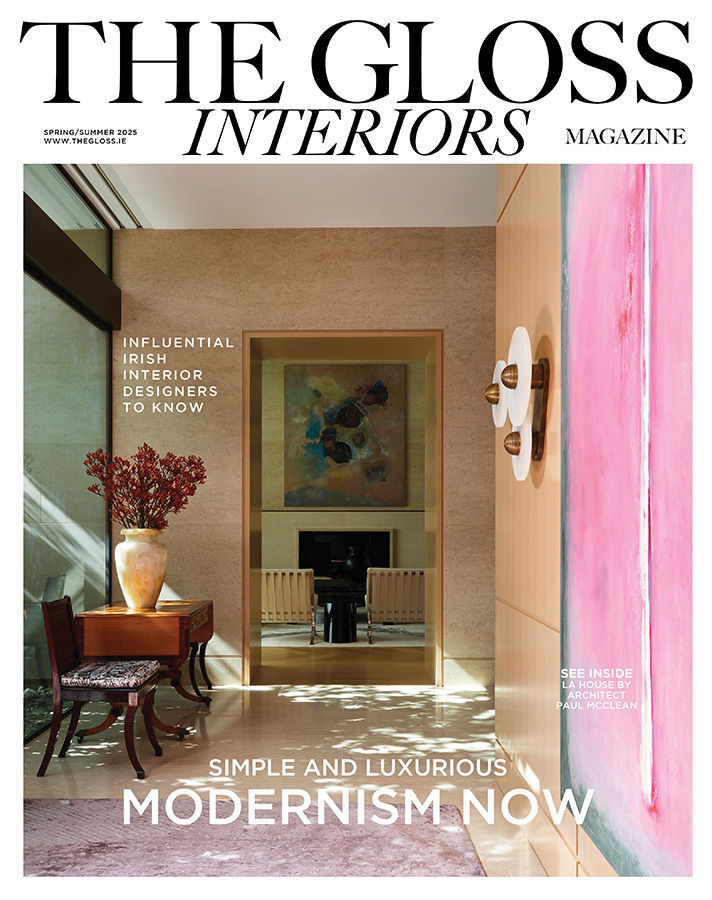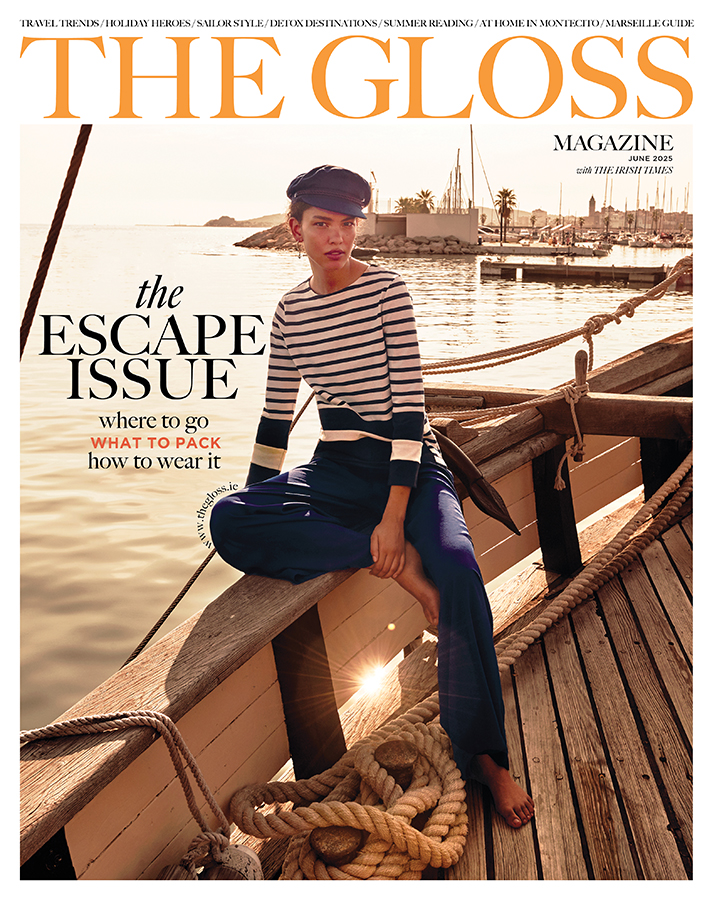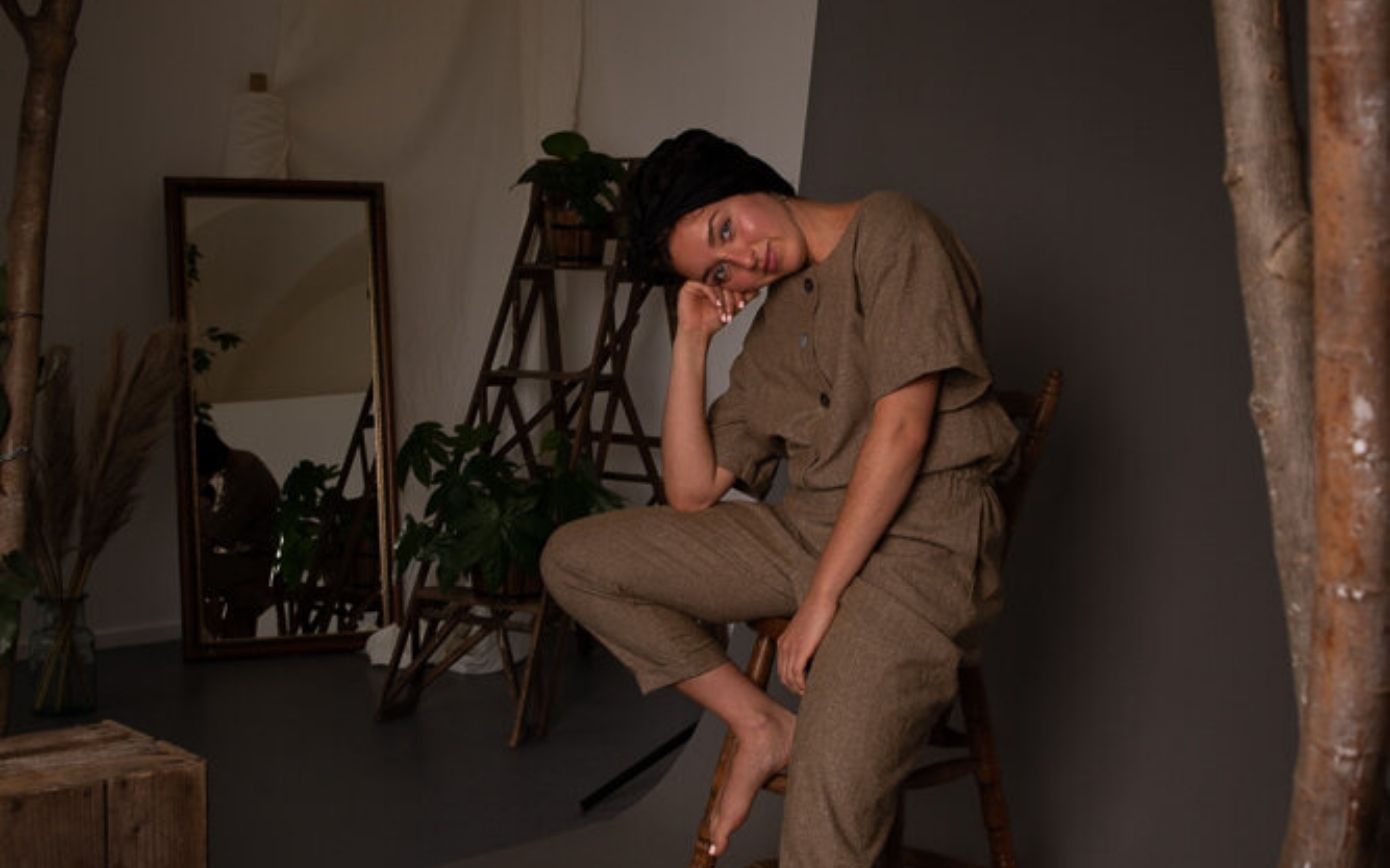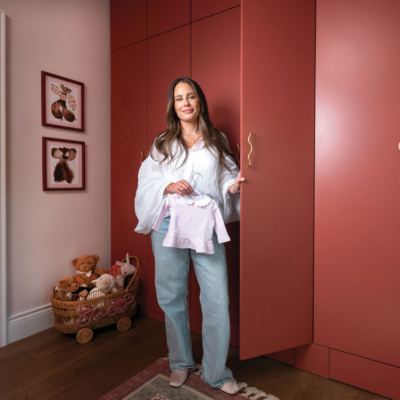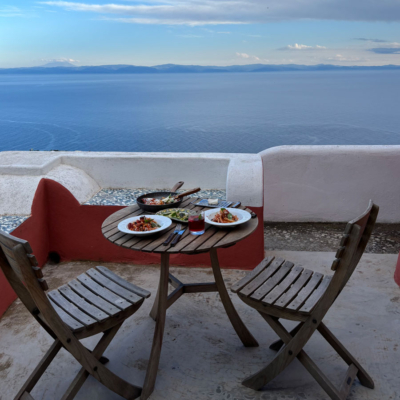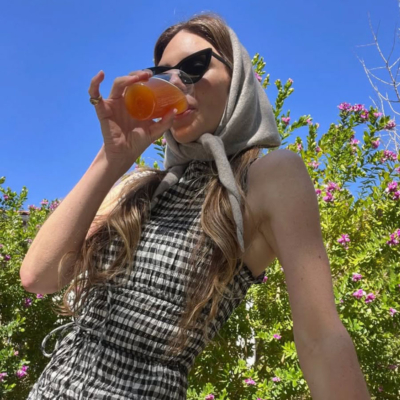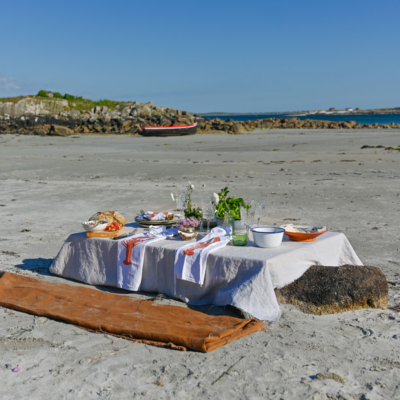Designer Zoë Carol Wong’s last collection released under her eponymous label was in 2017. After that she took a hiatus from designing to start her family and move to a small village in Kilkenny. With a planned re-launch for April of this year, the global pandemic had other plans – Wong quickly pivoted from releasing her ready-to-wear collection and decided to create a selection of face masks. Six months later, Wong has revealed her mix-and-match collection of linen pieces alongside a selection of knitted accessories, we spoke to her about the difficulties of launching during the pandemic, the importance of community in craft, and why a made-to-order model is essential to her business.

On re-launching her brand during a global pandemic …
“Before this year, my last collection was for spring/summer 2017. My career was very fast paced back then; I would do two collections per year, spring/summer and autumn/winter and I had multiple suppliers. The collections were made between myself and tailors in Hong Kong, so there was a lot of travelling involved. Last year I made the decision to re-launch my line. It was due to launch in April of this year, but the global pandemic put a hold on that. Instead, I found myself producing face masks, I ended up making 70-80 masks per day by hand. When that simmered down, I decided: we can’t be in pandemic mode forever – we have to enjoy life again. So, I just said I have to do what I creatively want to do – if it doesn’t work, it doesn’t work but at least I’ve tried. I think the collection came at the right time in that people were feeling similar to me, they were coming out of the pandemic mental state and they were looking to buy something new, to get back to themselves, and also to support Irish.

On keeping things local …
I source my fabrics from Emblem Weavers in Wexford, I visit every six to eight weeks to see what new fabrics they have. Stephen [Conway, son of Emblem Weavers’ founder Jim] is so accommodating and never pushes me to buy extra or things that I don’t like. Throughout my career I’ve been manipulated into other people’s ideas and it’s really nice and refreshing to not feel that anymore. I get limited cuts of fabric from Emblem Weavers so it’s all unique. Now all my production is done in Ireland too. The pandemic has really shown me that we can’t keep relying on external forces to keep this country running. You need to peel it back.

On choosing a made-to-order business model …
Everything is made to order now. It’s a much more sustainable model and more environmentally conscious as there are no excess fabrics. Bigger companies make and make and make, they try and sell it and the stuff that doesn’t sell goes into sale and when it still doesn’t get sold it goes into landfill or it gets burnt. I just really hated the thought of that – even the thought of the clothes being made and not being loved – so now everything is made to order. The pieces get made in the studio by me, then get shot by a photographer and uploaded to my website, people who want to place an order get in touch with me directly. It’s important to me that there’s no waste involved, there is no stock sitting there unused.
Producing on a made-to-order model also means there’s an additional personal aspect to it. My last customer bought the jumpsuit, and when I sampled it, I sampled it for my height and she’s much taller. When she enquired about ordering she asked if it came in any other lengths and I was able to custom make it to suit her height. Being able to talk to the customer and really listen to what they want is so important to me. It’s also very beneficial to the customer if they can change lengths or other features so that a piece fits them perfectly.
Another benefit of making to order means that I can go up to a much larger size than is generally available on the high street, my pieces are available from UK6-UK24. I think inclusivity is so important. Why does a size 10 deserve to be dressed any more than any other size? It just doesn’t make sense. It shouldn’t even be an issue.

On the new linen core collection …
I think having a family changed a lot for me. I noticed that I dressed differently. I love the tactile and durability of linen and I think linen lends itself to a particular style of clothing that’s comfortable but smart and flexible in a wardrobe – I wanted the pieces to be classics as well. To do that, and to keep the price point as it is, the designs had to be really clean and have a chameleon aspect to them. The way I wear clothing isn’t by season, I have very little summer or winter clothing. You’ll notice there isn’t anything that’s specifically seasonal about the collection – there are no long sleeves, all the pieces can be layered, they can be matched with other things you have in your wardrobe. They’re meant for everyday wear – not for good wear and occasions. And I think that’s really important because of the price point, people are really investing so they need to be able to get the wear out of it. I don’t want to make things that just stay in a wardrobe because let’s face it, we’re not going anywhere special these days, so these clothes are meant to be worn and loved and used every day. I think the collection as it stands is a good core collection to build on in the future – for both me and my customers.

On branching into knitwear …
The knitwear accessories in this collection are a real passion project of mine. When I moved to Thomastown, Kilkenny I knew that it was a really creative hub, so I joined the local country market and there were all these old ladies who knitted baby cardigans and blankets. I kept on talking to them about wanting to make knitwear and knitted accessories, but they just weren’t interested in talking to me, they didn’t trust me – I was a blow-in into Thomastown in their eyes.
Three years later, during Covid, I said to Marie, one of the ladies at the market who I had previously purchased a pair of mittens from; “Would you PLEASE just knit me this mitten?” I told her I would like to create something similar but I wanted to use a pattern from a vintage Aran sweater I bought many years ago. She eventually agreed and I got her a cone of sample yarn from Cushendale Woollen Mills in Kilkenny and she made me the most beautiful mittens. Together we then worked the pattern into a hat and a neckwarmer.
Now she has slowly built trust among her collective of handknitters so I have 13 women dotted around the south-east and they’re all knitting from their cosy homes, by the fire, watching TV – and it’s really lovely. Most of them had retired and they were also really disillusioned by the fashion industry. I think because previously they didn’t have any autonomy on how they worked which was very important to me. When they first started, they would say to me: “How much can you give us to knit?” and my answer was always “No, that’s not how it goes, you tell me how much you want and I will pay you that amount. This is what you’re worth.” They’d never had that before; they are all 50-80 years of age. That really broke my heart. When working for me, they have complete control in how they work and how they deliver their knitting.
I’m also working on hand-knitted sweaters at the moment which will be launching soon. Feedback is really important to me because it’s so new I want to see what works well and what doesn’t work well so that I can build on that and ensure that I am creating pieces that people will love, wear and treasure for years and pass down when the time comes.
Photographs by Madeline Mulqueen
LOVETHEGLOSS.IE?
Sign up to our MAILING LIST now for a roundup of the latest fashion, beauty, interiors and entertaining news from THE GLOSS MAGAZINE’s daily dispatches.



